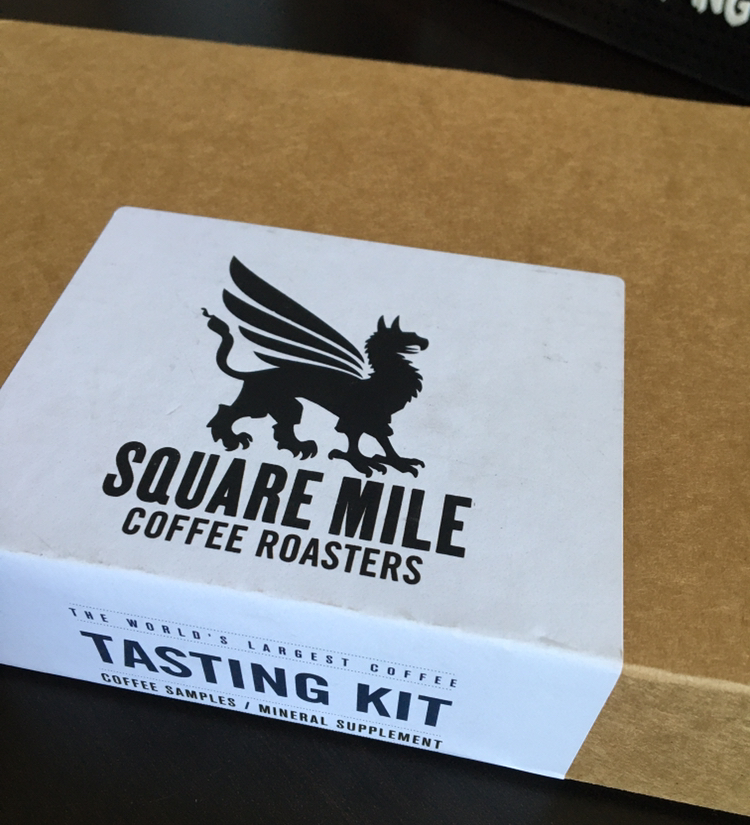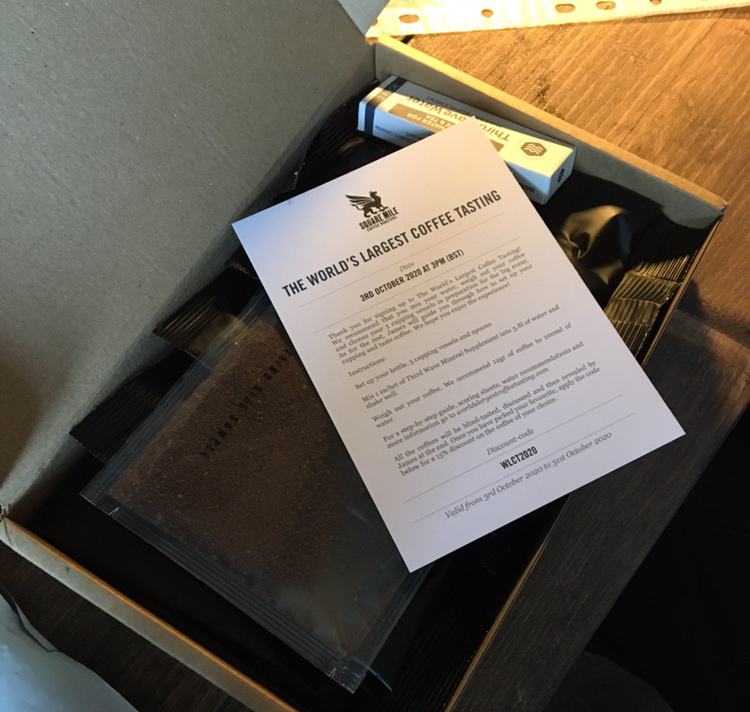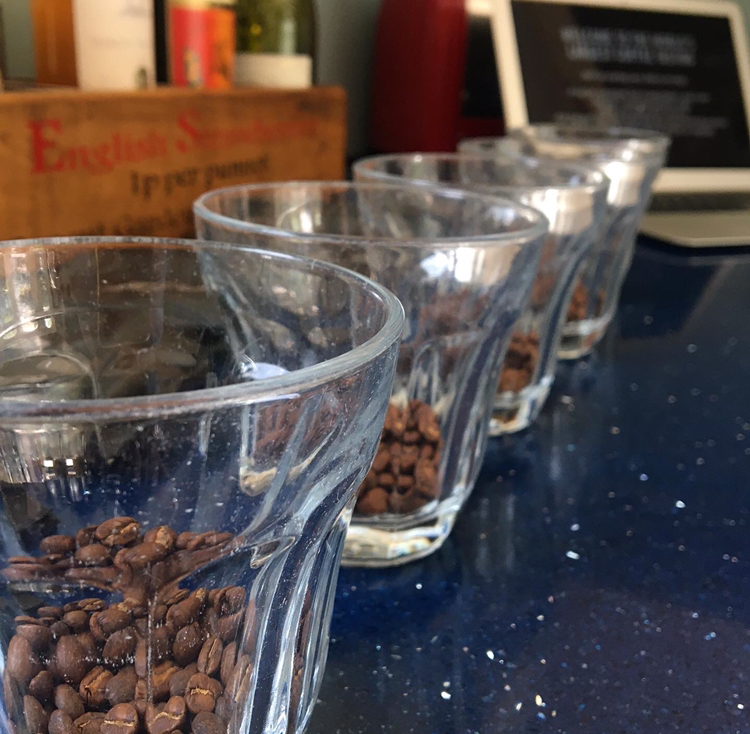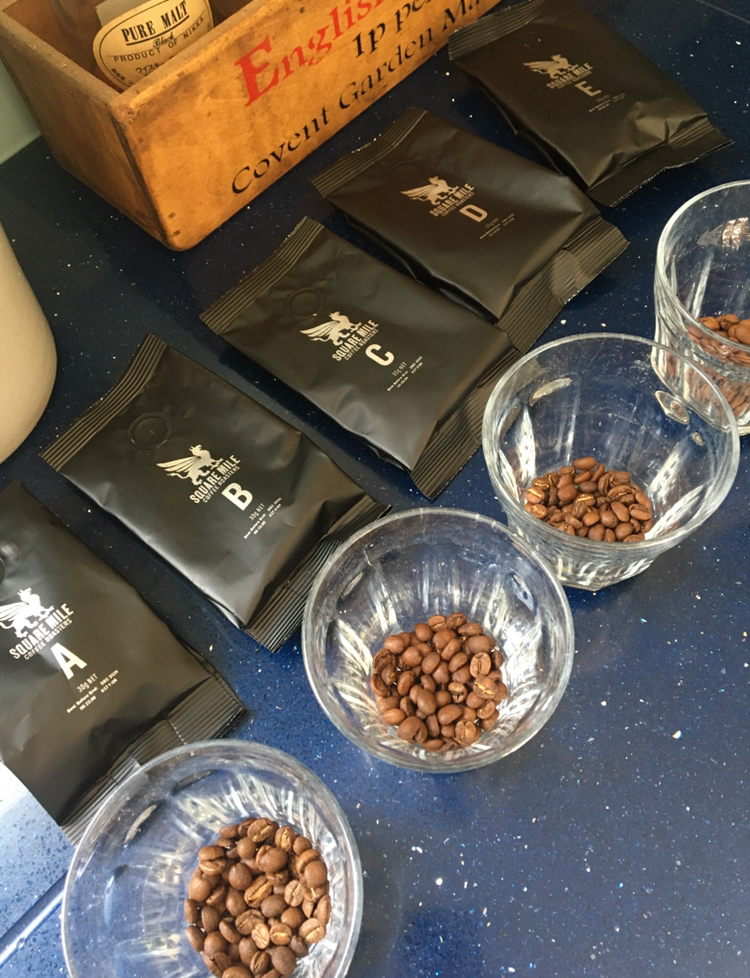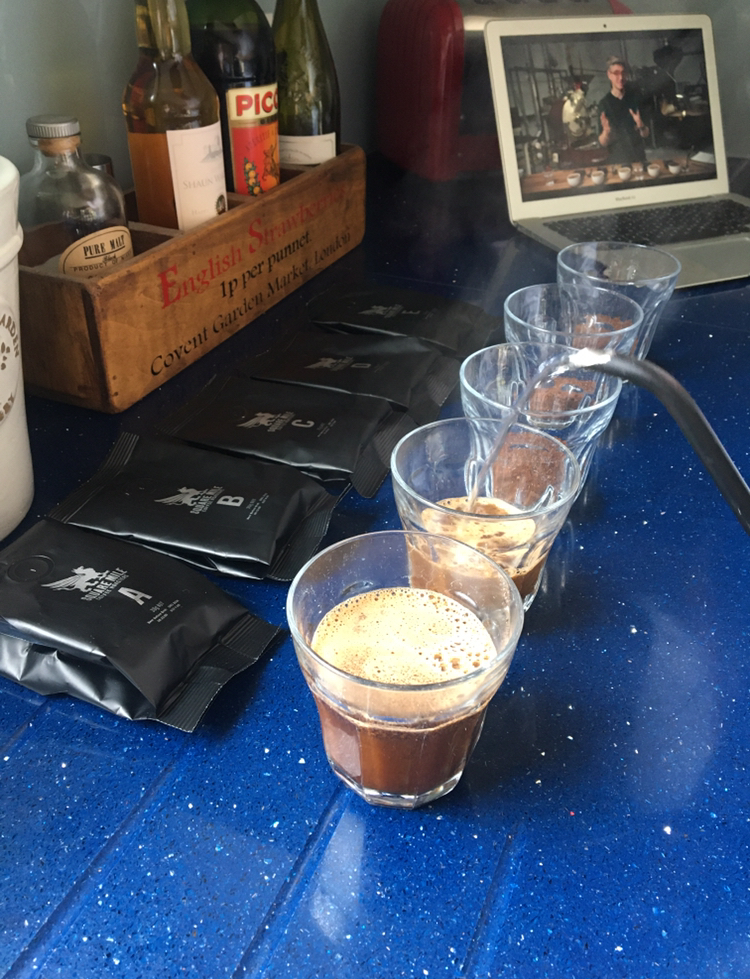On Saturday, October 3rd 2020, we joined in with the World’s Largest Coffee Tasting.
I have to confess this event would have passed me by if it hadn’t been for my coffee-geek son who signed up for our tasting kit the day ordering was opened back in the summer.
The tasting kit from Square Mile Coffee arrived a couple of weeks ago, and the excitement started brewing. A beautifully packaged kit comprising of 5 coffees labelled for blind-tasting, a sheet for tasting notes, some instructions, a grind sample, and a couple of sachets of something called Third Wave Water – because tap water just wouldn’t do.
When the day rolled around, Ollie ran through all the set up before we tuned in to James Hoffman’s live-streamed guided tasting event on You Tube at 3pm.
All this talk of distilled water and grind samples makes it sound very specialist. If I’m honest, probably a bit too much faff if it was left to me. I can take no credit for the setup but was very happy to swan into the kitchen at 3pm with a clean palate ready for a caffeine hit, or five.
To begin:
Weight out your coffee (don’t grind it)
Mix your Third Wave Water and put it in your kettle (don’t boil it)
Print your scoresheet, get a pen
Get your cups ready (or glasses or bowls)
Get your spoons
Get some drinking water
All set
I’m poking fun a bit at the pretentiousness of a coffee cupping, but it really isn’t. If you like coffee, it’s a fun and interesting thing to do. And the great thing about it being a guided tasting is that you have someone talk you through how to do it, how to prepare the coffee, how long to leave it brewing, the best temperature to taste it, how to break the ‘crust’, and how to ‘taste’ with maximum slurp using a tasting spoon. Again, it sounds technical, but apart from a coffee grinder, there was no other specialist kit needed, really. We made do with glasses instead of cupping bowls and soup spoons instead of cupping spoons, and they worked fine.
When the actual tasting began, James Hoffman consciously didn’t describe any of the aromas or flavour notes so as to avoid putting words in anyone’s mouths. There are no wrong answers – it’s what you taste and what you think – it’s just for fun.
Moving through the samples from A-E, it felt like we were building up. We started with light aromas and sweet fruity flavours, moving up to fermented and then savoury notes as we got to D and E. We speculated about washed coffees and aged coffees, and compared aromas to ‘soaps’, ‘hazelnuts’, and even ‘ramen’.
It was only when we tasted back and forth, we began to think that coffee D might be a bit of wild card. The ramen smell that I was getting, then hit me as being sesame. And when working back, the lighter coffees at the start, suddenly had more to offer in flavour and aroma. It revealed a lot about how we’re presented with information impacts our opinions. I was willing to accept the building up from A-D as a progression of strengths or taste complexities. It turned out that coffee D was a Robusta.
If I can find a blog with a list of all the results on, the full name of each of the coffees, I’ll add them it later. For now, here are the rough notes we made with a few flavour descriptors.
- A (Guatamalan) – fruity, stale, fangtastics
- B (Costa Rican) – maillard
- C (Ethiopian) – sherbet, hazelnut, chocolate
- D (Ethiopian) – IPA, fermented, toast
- E (Ugandan) – sesame, savoury, ramen
Over 11,000 people tuned in to take part, all having bought a kit for £7 ready for the event. That must have taken some serious organisation and logistics. As well as the coffee tasting, because that was great in itself, it was pretty cool to be joining in with something this big!

